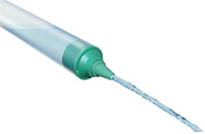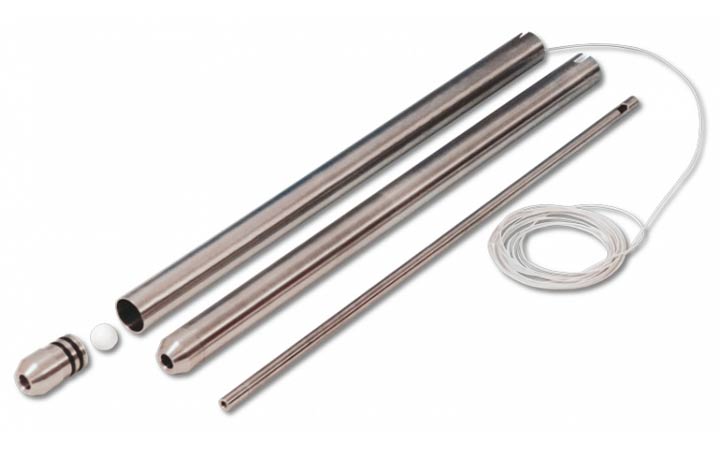- Choice of Sizes Now available in 19 mm & 39 mm diameter
- Holds Larger Sample 39 mm version holds over a litre of sample (1025ml)
- Biodegradable When discarded in a landfill, additives in the PVC encourage microorganisms to break down the material. The BioBailer does not break down unless exposed to high microbial conditions.
- Available in boxes of 24
Overview
The Model 428 BioBailer is an inexpensive biodegradable bailer made from a high quality PVC that will not bend. This BioBailer has been designed with tapered ends to prevent any well hang ups as well as a sturdy handle for use with a suspension cord.
The 428 is capable of holding more than one litre of sample material, which is visible on site due to its transparent PVC construction. Samplings are obtained by lowering the bailer into the water where water can then enter the BioBailer through the base via a non-return ball valve. Under its own weight, the BioBailer will naturally sink and when retrieved, the check-ball sinks to the bottom of the bailer, trapping the obtained sample within the bailer.
Manufactured by: Solinst
Model: BioBailer
Services offered for this product
- Sales
- Rental
- Installation
- Calibration
- Maintenance
- IoT Cloud Compatible
Applications
Sampling for LNAPL (floating product).
Routine groundwater sampling.
Cost-effective grab sampling.
Specification
| Size's Available | 38 mm diameter x 91.5 cm (1.5” x 3 ft) body to hold more than one litre of sample (1025 mL). 19 mm diameter x 91.5 cm (3/4” x 3 ft) body to hold 200 mL). |
| BioBailers™ have been tested for non-leaching using the SPLP EPA 1312 extraction process followed by analysis using EPA 8260 for volatiles and EPA 8270 for semi-volatiles. This is a long duration test of 18 hours, which greatly exceeds the expected use time of a disposable bailer. |
|
Related products
FAQ's
- Lower cost for instrumentation
- Faster sampling
- Little/no water agitation
- Simple
- Allows sampling in wells with small water volumes
- Variety of sample sizes
- Can be used to identify stratified layers of water chemistry in wells/boreholes



